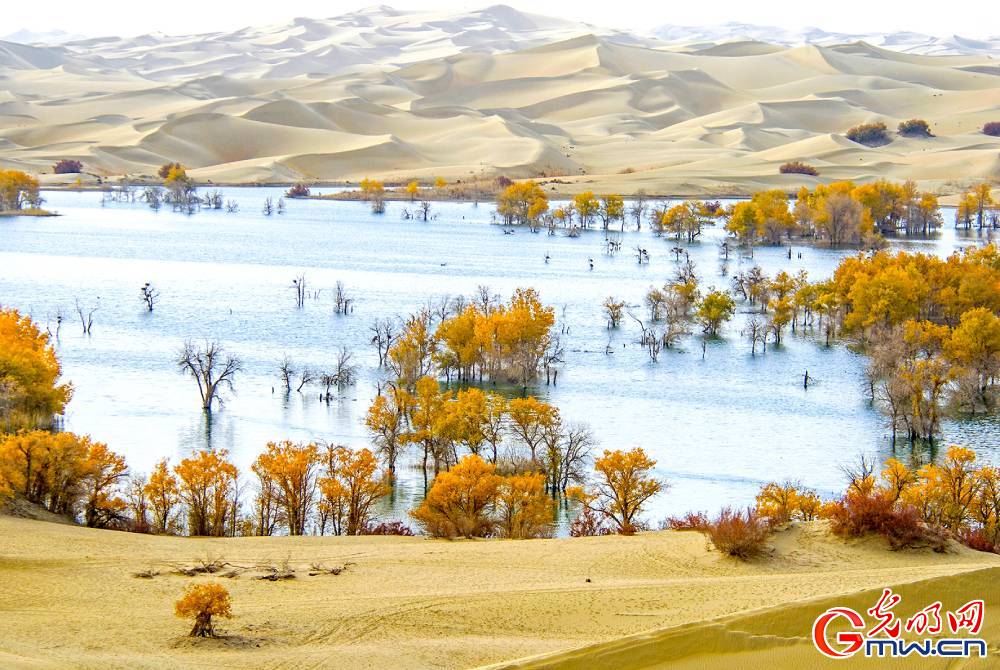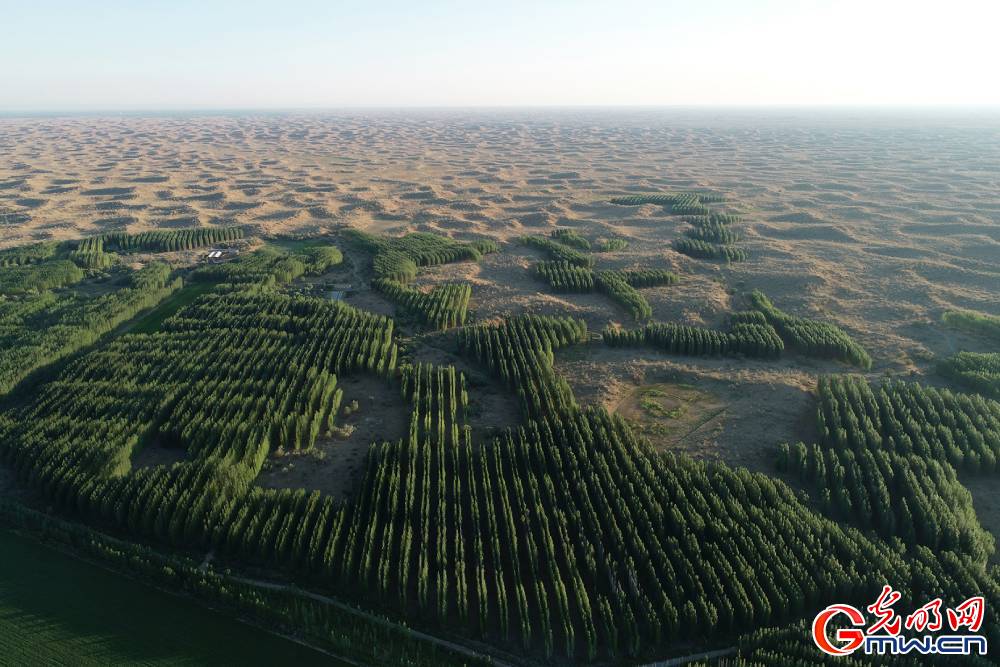

Concerted Efforts for Ethnic Harmony
Throughout history, Xinjiang has been a shining pearl along the ancient Silk Road and a gateway for East-West communication. Since time immemorial, Xinjiang has been a place where multiple and diverse cultures co-exist in harmony.
Standing in front of a sand miniature at the Khorgos Culture Exhibition Hall, we felt strongly the ambition and magnitude of the Silk Road Economic Belt. Today, as a gateway of the Belt and Road Initiative, Khorgos is regaining its historical glory.
Gulibahar Galmukhaz, head of the land port of Khorgos Economic Development Zone, told us that over 6,000 China-Europe Express Trains traveled through the port in 2021, accounting for 50% of the four railway ports in China. The port is a microcosm of how Xinjiang has benefited from the Belt and Road Initiative.
Our trip was also a tribute to the history of Xinjiang. Through the dust of yellow sands and the thick clouds of history, we revisited the great figures who once lived on this great land.
What decorate the vast land of Xinjiang are not only the “Zuo Zongtang Willows” planted some 150 years ago in late Qing Dynasty, but also poplar trees which manifest the miracle of life. The locals call the trees “heroes in the desert” because they can live up to 1,000 years. In Xinjiang, generations of Production and Construction Corps have guarded and developed the place just like these “desert heroes”.

Photo taken on Oct 30, 2021 shows the beautiful poplar trees in the water at Huludao tourist spot, 33 Tarim Reclamation Regiment, Tiemenguan City, Xinjiang Production and Construction Corps 2nd Division. (Photo/Guangming Picture)
In 1954, Brigade 359 followed Chairman Mao Zedong’s instructions to lock up their weapons and engage in developing the region. Since then, many aspiring young people from the rest of China have left their hometown to join the ranks of Xinjiang Production and Construction Corps.
The Corps followed Chairman Mao’s words of “not hurting the interest of the locals”, hence most of the Corps’ facilities were built along the edges of the desert. The gales blowing with desert sands did not scare off these intrepid Chinese men and women: without means of transportation, they carried loads on their shoulders; without livestock, they pulled the plow and planted the land by themselves; without food supply, they fed on cereals with salt water and spicy noodles. Generations of the Corps were just like the willow and poplar trees in the Gobi Desert, which have taken roots and become the invincible and unmovable “boundary marks” of the country.
For 68 years, the Corps have held a hoe in one hand and a gun in the other, not only safeguarding the integrity of the country, but also driving the socio-economic development of Xinjiang. Gone are the days of cow ploughing and kerosene lamps, today Xinjiang leads the country in mechanized farming thanks to the Corps’ endeavors.

Harvesters and transport vehicles harvest tomatoes at a farm in the 10th Company of the 22nd Regiment of the Second Division of the Xinjiang Production and Construction Corps, Aug 27, 2022. (Photo/Guangming Picture)
In the early years after liberation, Xinjiang’s industry was known for only capable of producing horseshoes and hemp ropes. Modern industries started to flourish following the arrival of the Corps, who helped establish an industrial system in Xinjiang that centered on textile, steel, coal, construction materials, electric power, petrochemical and machinery industries. The time-honored enterprises such as the July 1 Textile Plant, August 1 Steel Plant and Flour Mill are among the many achievements of the Corps. No wonder scholars today believe the Corps is the founder of modern industry in Xinjiang.
As an important force for stability in Xinjiang and border security of the country, the Corps has always been loyal to its mission of “serving the people in Xinjiang”. For decades, it has safeguarded the place, mobilized resources and brought prosperity to the land of Xinjiang. In order to support industrial development in Xinjiang, the Corps has transferred some industrial and commercial enterprises to local authorities for free.
After 68 years, the Corps itself has grown considerably, too. It has not only turned desert into oasis, but also evolved from “running agriculture” to “operating cities”. Today, Shihezi, Beitun, Tumushuk, Alar, Kokdala have become famous cities along the border line.

Photo taken on July 11, 2019 shows the southern edge of the Gurbantunggut Desert in Shihezi, northwest China's Xinjiang Uygur Autonomous Region. (Photo/Guangming Picture)
“The beautiful night is so quiet with only the sound of my accordion on the grassland. I want to write a letter to a girl faraway, but there is no postman that can take my love to her......”
The song “Grassland Night” from more than 60 years ago triggered enchanting imagination about Kokdala, but not many people know what the place was truly like back then.
“The place was covered with weeds and rat holes,” 93-year-old veteran Yan Xinqiu showed us a black-and-white photo. “We plowed lands in the day and squeezed in the tent at night. The winter was so cold that the bread we took was frozen like a rock”, Yan recalled.
Despite the hardships, the pride remains undiminished. In the old photos are young soldiers sitting around singing and playing accordion. It is with this fighting spirit that generations of the Corps have sealed a barren and desolate Kokdala in the depth of history forever. Nowadays, Kekodala is the Corps’ largest producer of food oil, corn seeds and livestock; and the per unit yield of corn has repeatedly refreshed the national record.
Deputy Secretary of the Corps Party Committee and Publicity Director Liu Jianming told reporters that General Secretary Xi gave full recognition of the Corps’ spirit, we must promote such spirit to further enhance ethnic unity, maintain social stability and reinforce border security.
点击右上角![]() 微信好友
微信好友
 朋友圈
朋友圈

请使用浏览器分享功能进行分享
